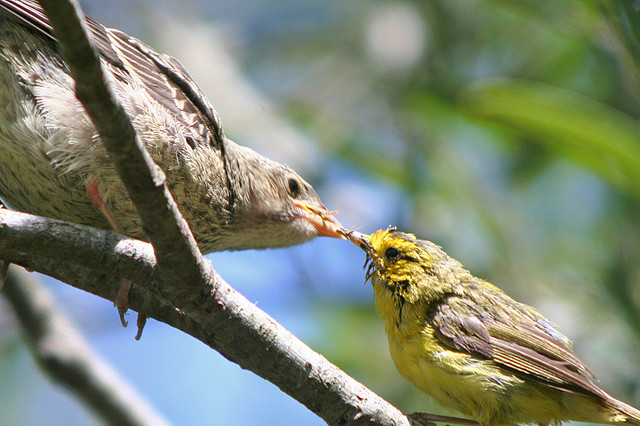Yes. Some scientists prefer not to call it “smart” but instead like to think that in order to survive birds have figured out how to do some pretty amazing things.
A few examples:
- Crows can make ‘tools’ to get food.
- Grackles are commonly seen taking hardened pieces of bread or dog food, putting them in water, and then eating them after they have softened.
- Blue Jays will imitate the calls of hawks. Maybe they do this to tell other jays that a hawk is around, or maybe they are deceiving other species into believing a hawk is present so they can get their food.
- A female Brown-headed Cowbird makes no nest of her own, but instead lays her eggs in the nests of other bird species, who then raise the young cowbirds.The female deposits as many as 40 eggs per year in nests that belong to other bird species. The female cowbird finds these nests by watching patiently. She typically chooses a nest with eggs smaller than her own and lays just one egg quickly at dawn once there are a few eggs in the nest. Cowbird nestlings are typically larger than their nest-mates and eat most of the food provided by the confused parents.
- Flocks of starlings fly skillfully. They appear to move as a single unit in a fluid dance, especially when avoiding predators or mobbing. The birds on the edges lead and can change directions instantly. It takes just 67 milliseconds for the first birds to react to a change in direction. It’s like doing “the wave” at a football game, except that birds are much better at it than humans and they are flying at 30 miles per hour when they do it. Hawks become confused by a tightly packed flock.
- Some birds are thought to “play”. Watch this video of ravens playing in the snow:
